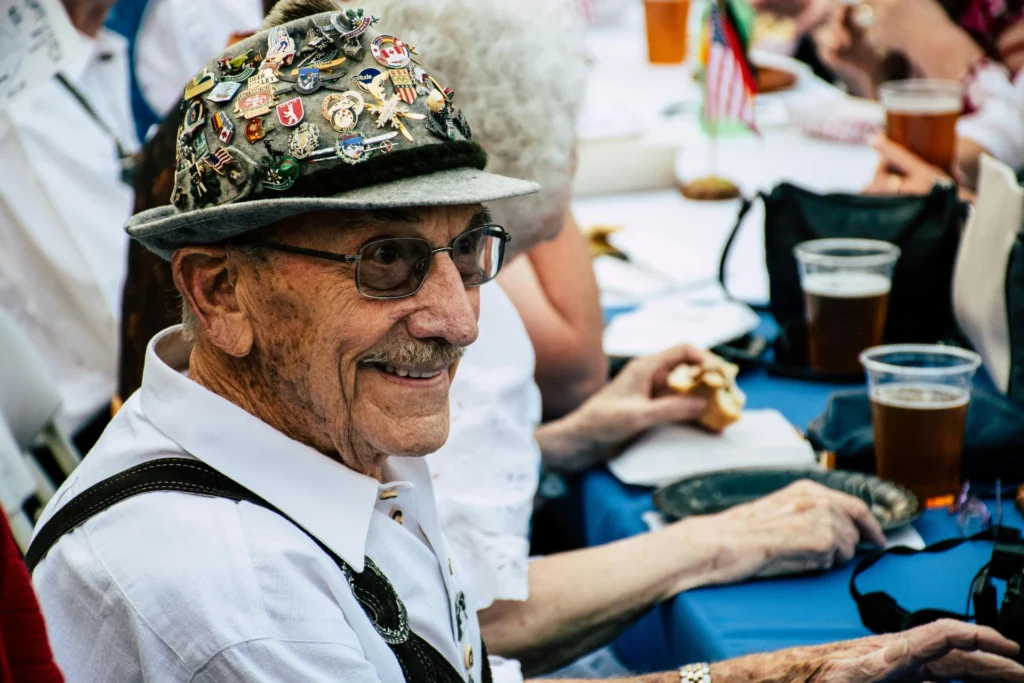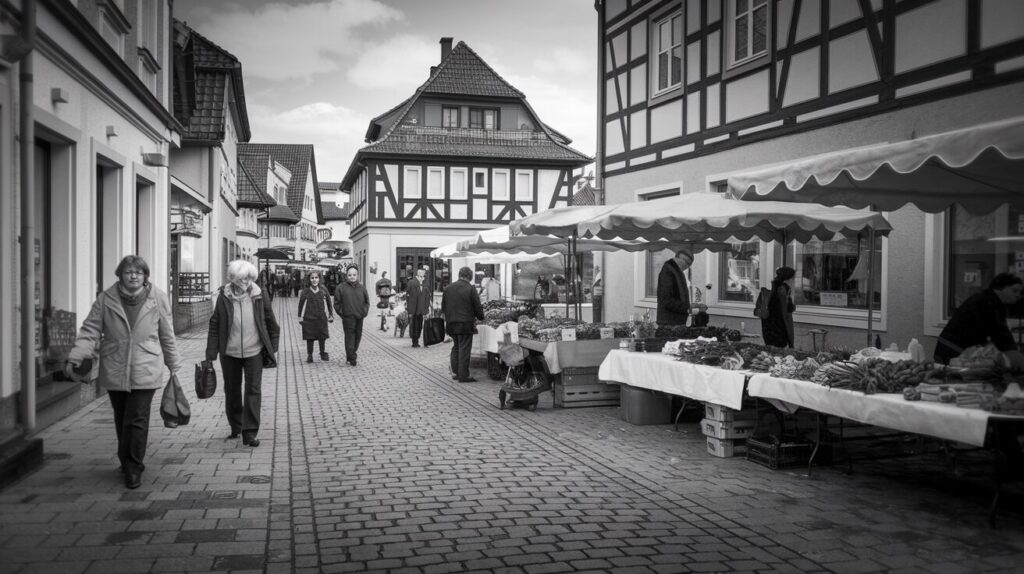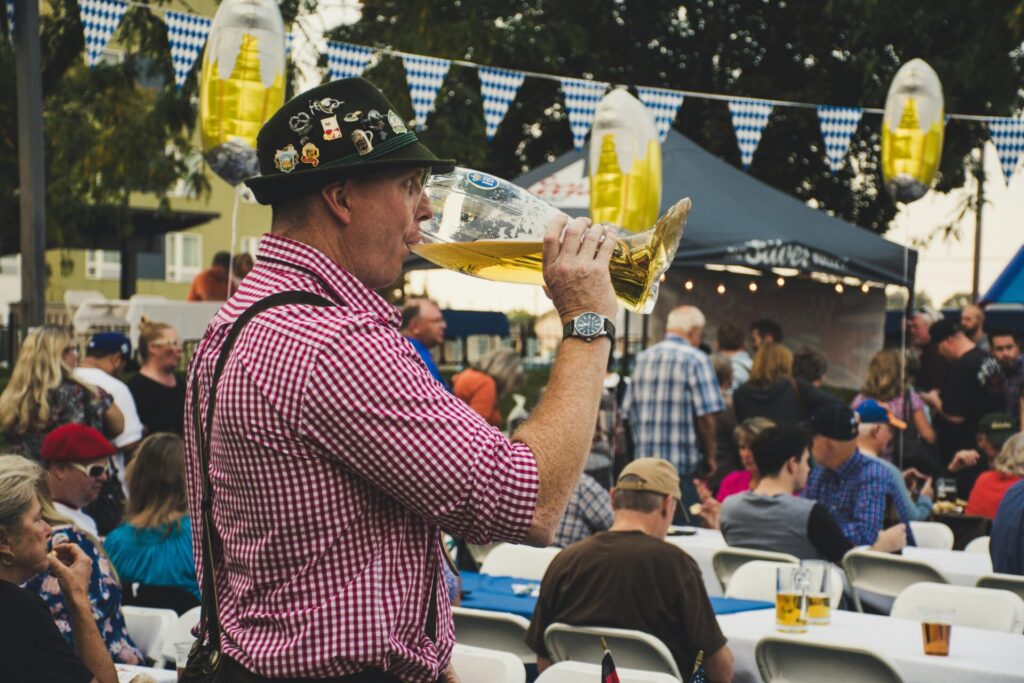A Look at the History of German Hats
Hey everyone! Grab your favorite Bratwurst and a Radler, because today we’re diving headfirst (pun intended!) into a fascinating piece of German culture: hats! Specifically, those iconic German hats that you see at Oktoberfest, German festivals, and maybe even hanging in your Oma’s closet. We’ll uncover the rich history of German hats and their vital role in cultural expression.
As German-Americans, we’re often drawn to the traditions and symbols that connect us to our heritage. And while Lederhosen and Dirndls might be the first things that come to mind when you think of German attire, the humble hat plays a surprisingly important role in the story of German identity. So, let’s explore the history of German hats, why they were (and sometimes still are!) worn, and how they’re seen today.
Traditional German Hats: More Than Just a Fashion Statement
When we talk about “German hats,” we’re usually referring to a few specific styles, most notably the Tirolerhut (Tyrolean hat) and its variations. These hats are characterized by their distinctive shape, often made of felt or wool, and worn with various decorations. But before we get into the nitty-gritty of specific styles, let’s understand the broader context.
German hats, especially in the past, were way more than just a way to keep the sun out of your eyes. They were badges of identity, indicators of social status, and symbols of regional pride. Think of them as wearable resumes, silently communicating information about the wearer to everyone they encountered.



A Walk Through Time: The History of German Hats
The history of German hats is long and varied, stretching back centuries. While it’s difficult to pinpoint an exact origin date for the specific styles we associate with German culture today, the practice of wearing hats in the German-speaking regions of Europe has deep roots.
- Early Influences: Head coverings have been a part of European culture for millennia, serving practical purposes like protection from the elements. As far back as the Middle Ages, different regions and social classes began to develop their own distinct styles of headwear. These early hats were often simple and functional, made from materials like wool, linen, or leather.
- Regional Variations Emerge: As Germany remained a collection of independent states and principalities for much of its history, distinct regional identities flourished. This regionalism extended to clothing, and hats were no exception. Different areas developed their own unique styles, colors, and embellishments, reflecting local traditions and resources. For example, the Black Forest region became known for its straw hats, while other areas favored felt or wool.
- The Rise of the Tirolerhut: The Tirolerhut, or Tyrolean hat, as we know it today, began to take shape in the 19th century. The Tyrol region, encompassing parts of Austria, Italy, and Germany, developed a distinctive style of hat that became increasingly popular throughout the German-speaking world. These hats were typically made of green felt, with a tapered crown and a brim that could be worn up or down. They were often decorated with a hatband, feathers (usually Gamsbart, made from chamois hair), and other decorative elements.
- Hats and Social Status: Throughout much of German history, hats were also indicators of social status and occupation. Different professions and social classes often wore specific styles of hats that identified their role in society. For example, farmers might wear simple straw hats, while merchants might sport more elaborate felt hats.
- Hats in the 20th Century: The 20th century brought significant changes to German society, including the rise of mass production and the decline of traditional social hierarchies. While hats remained a part of German culture, their role as indicators of social status diminished. However, they continued to be worn as symbols of regional pride and cultural identity, particularly at festivals and celebrations.
Why They Wear Them: More Than Meets the Eye
So, why did Germans wear these hats? The reasons are multifaceted:
- Practicality: First and foremost, hats provided protection from the elements. Whether it was the scorching summer sun or the cold winter wind, a good hat could make a big difference in comfort.
- Regional Identity: Hats were a powerful way to express regional pride and belonging. Wearing a hat that was specific to your region was a way of saying, “This is who I am, and this is where I come from.”
- Social Status: As mentioned earlier, hats could also communicate social status and occupation. The style, material, and embellishments of a hat could all provide clues about the wearer’s position in society.
- Tradition and Celebration: Hats were (and still are!) an big part of German traditions and celebrations. Wearing a traditional hat to Oktoberfest or another German festival is a way of honoring your heritage and participating in a shared cultural experience.
- Decoration and Personal Expression: Beyond their practical and symbolic functions, hats were also a way for individuals to express their personal style and creativity. The addition of feathers, pins, and other decorations allowed people to customize their hats and make them their own.



How They Are Worn Today: A Modern Take on Tradition
Today, German hats are less about everyday necessity and more about cultural expression. You’re not likely to see people wearing Tirolerhuts to the grocery store (unless they’re feeling particularly festive!), but you will see them at:
- Oktoberfest and Other German Festivals: This is where German hats truly shine! Whether you’re in Munich or at your local German-American festival, a Tirolerhut is the perfect way to complete your Dirndl or Lederhosen outfit and show your German pride.
- Folk Dance Groups and Cultural Performances: Many German folk dance groups and cultural organizations incorporate traditional hats into their performances, helping to preserve and promote German culture.
- Family Gatherings and Celebrations: Some families continue to wear traditional hats at family gatherings and celebrations, passing down the tradition from generation to generation.
- As a Fashion Statement: While traditional German hats are primarily worn for cultural purposes, some people also incorporate them into their everyday wardrobes as a fashion statement. A well-chosen hat can add a touch of personality and flair to any outfit.
- Tourist Souvenirs: Of course, German hats are also popular souvenirs for tourists visiting Germany. They’re a great reminder of a trip and a fun way to show your appreciation for German culture.
Tips for Wearing a German Hat Today
If you’re thinking about adding a German hat to your wardrobe, here are a few tips to keep in mind:
- Consider the Occasion: Are you wearing the hat to Oktoberfest, a family gathering, or just for fun? The occasion will help you determine the appropriate style and level of formality.
- Choose the Right Style: There are many different styles of German hats, so choose one that suits your personal taste and complements your outfit.
- Pay Attention to Fit: A well-fitting hat is essential for both comfort and style. Make sure the hat sits comfortably on your head and doesn’t feel too tight or too loose.
- Don’t Be Afraid to Accessorize: Feathers, pins, and other decorations can add a personal touch to your hat.
- Wear It with Confidence: The most important thing is to wear your German hat with confidence and pride!
Conclusion: A Hat’s Off to German Heritage!
So, there you have it – a brief but hopefully insightful look at the history of german hats. From their practical origins to their role as symbols of regional identity and cultural pride, german hats have played an important role in the story of German culture. As German-Americans, embracing these traditions helps us connect with our heritage and celebrate the rich tapestry of our ancestry.
Whether you’re a seasoned German hat wearer or a curious newcomer, I hope this post has inspired you to learn more about the fascinating world of German hats. And who knows, maybe you’ll even be inspired to add one to your own collection!



FAQ
What’s the history of German Hats, particularly the traditional German hat, and what does it represent?
The traditional German hat, often called a Tirolerhut or Bavarian hat, has a long and fascinating history. While its exact origins are a bit murky, it’s believed to have evolved from hats worn by farmers and hunters in the Alpine regions of Bavaria and Tyrol. Historically, these hats were practical, offering protection from the sun and rain. Over time, they became symbols of regional identity and pride. The decorations, like feathers, cords, and pins, often signified the wearer’s village, occupation, or even their social status. Today, they’re a beloved symbol of German heritage and tradition.
I’ve seen German hats with different types of feathers. What do they mean?
Accessorizing your German hat can reflect your personal affinity for the history of German hats. The feathers on a German hat aren’t just for decoration; they often carry meaning. A Gamsbart (a tuft of chamois hair) is a particularly prized adornment, traditionally worn by hunters and considered a sign of skill and respect for nature. Other feathers, like those from pheasants or other birds, can also indicate a connection to the outdoors or a specific region. While the specific meanings can vary, generally, the more elaborate the feather arrangement, the more prestige it implied.
Why do people still wear German hats today, especially at festivals?
Wearing a German hat today is a fantastic way to connect with your heritage and celebrate German culture! At festivals like Oktoberfest or German-American cultural events, these hats are a symbol of pride and belonging. They’re a fun and festive way to show your connection to your roots and participate in the traditions that have been passed down through generations. Plus, they just look great!
How should a German hat fit? Is there a “right” way to wear it?
Choosing a German hat reflects a connection to the rich history of German hats and traditions. The hat should fit comfortably and securely on your head. It shouldn’t be too tight, causing discomfort, nor too loose that it easily falls off. The wind should not be able to blow it off your head and when wearing the hat, you should be able to shake your head from side to side without the hat moving around. The brim should sit evenly around your head and just above your ears. As for the “right” way to wear it, there isn’t a strict rule! Generally, the hat is worn straight on the head, but a slight tilt can add a bit of personal flair. Ultimately, it’s about feeling confident and comfortable in your hat.
I’m German-American and want to buy a German hat. Where can I find an authentic one, and what should I look for?
There are several places to find authentic German hats. Online retailers specializing in German clothing and accessories are a great option. Also, check for German-American cultural centers or festivals in your area, as they often have vendors selling traditional items. You can view the festivals we participate in as well. When choosing a hat, look for quality materials like felt or wool. Pay attention to the details, such as the stitching, the type of cord, and the overall craftsmanship. Reading reviews and comparing prices can also help you find a hat that’s both authentic and a good value. Prost!




